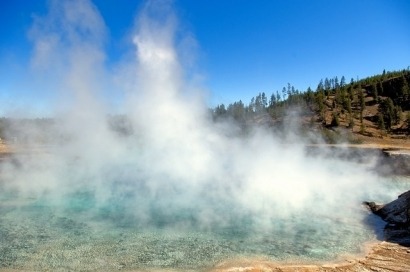
Geothermal heating and cooling systems reach beneath the Earth’s surface, where the underground temperature is stable and can send heat to buildings. The U.S. Department of Energy reports that using a geothermal heat pump can cut emissions more than forty percent. By retrofitting current structures with heat pumps, professionals can meet climate goals. Federal and state programs can make geothermal systems energy efficient and cost saving.
The pumps are solid and reliable, and builders can use them in many homes and locations. Geothermal systems can create healthy indoor air by minimizing pollutants and controlling humidity. Natural gas appliances can contaminate the air and cause respiratory symptoms in sensitive individuals.
It’s hard to notice a geothermal heat pump while it works. Unlike traditional heating units, they don’t produce odors or flames. These traits appeal to eco-conscious buyers, and those who value peace and quiet. There are three types of geothermal symptoms — geo-exchange, direct geothermal and deep geothermal.
Geoexchange — or ground source — systems are excellent for providing clean energy to homes and businesses. They connect a heat pump to a series of underground pipes that sit in vertical holes several hundred feet below or horizontal pathways just a few feet underground. The pipes circulate a liquid like water to capture and transport heat to and from the structure.
Once the heated fluid from geo-exchange arrives at a home or office, the geothermal system uses it to heat air and clean water via a heat exchanger and desuperheater. Once it takes the heat, the fluid recirculates to the ground to begin the process again. This method is great for homes and small commercial businesses, providing an environmentally friendly alternative to traditional electrical sources or natural gas.
Direct geothermal is an excellent method for large-scale heating and cooling needs. A direct geothermal system relies less on underground pipes, and more on bringing underground water and steam above the surface via wells.
In some locations, water can get higher than 200° Fahrenheit. You can find those temperatures in nature in geysers and hot springs. By creating a well, homeowners make a personal source.
Occasionally, a pump system gets installed in a direct geothermal system, but it's often unnecessary. Owners can use the resources through a heat exchanger to supply hot and cool air to it. Since it doesn't recirculate, the water may need replenishment from above-ground water. Groundwater movement could also naturally refill the source.
Since they utilize hot underground water, these systems can heat large pools, provide on-demand hot water, melt snow on roads and sidewalks, and heat or cool multiple buildings simultaneously. The industrial and agricultural industries also use direct geothermal for various purposes.
Deep geothermal systems expand on the direct geothermal principles. They use steam below the planet’s surface to fuel large-scale needs.
Unlike direct geothermal, builders use two wells to control the system. The first well injects water far below the surface for heating. Once it reaches several hundred degrees, the water transforms into steam, traveling through the second well. Some systems capture “dry steam” directly from the ground instead of circulation.
While the previous geothermal methods sit only feet below the ground, deep geothermal can drill a mile below the surface. Underground water can take a lot of heat and pressure before turning into steam. Once that steam air reaches its target, water gets injected into the ground.
Large-scale agriculture and commercial enterprises use this form of geothermal to power machinery and generate electrical power. It’s a clean energy source that can generate higher profits.
There are still barriers to overcome before all builders can utilize geothermal power. While temperatures underground are stable, accessing them can result in large amounts of soil removal, making the land unstable. Digging for geo-exchange boreholes can require thousands of feet of digging.
Soil conditions can also pose a public health risk. Heavy metals from deep underground can get into surface soil and water, posing a public health risk. Changes to groundwater levels also cause some systems to be unreliable.
Geothermal systems are barely noticeable when they operate correctly. However, they can be hard to fix when things go wrong. Closed-loop systems can last more than 50 years, but repairing an underground pump or pipe creates a massive mess. Businesses can face significant losses when they are unable to operate as usual. Developing less invasive tools for installing and repairing geothermal systems and better soil testing methods can help prevent those risks.
Another area for improvement is the initial cost of the systems. The average home can expect to pay several thousand dollars for equipment. While grants and tax incentives can help, some contractors can better afford to hook up to a preexisting power grid or natural gas line. Making the equipment more accessible is vital in creating sustainable structures.
Geothermal can be an excellent energy source for small- and large-scale projects. The construction industry can reduce its environmental impact and maximize profits with safe, innovative, cost-effective solutions.

